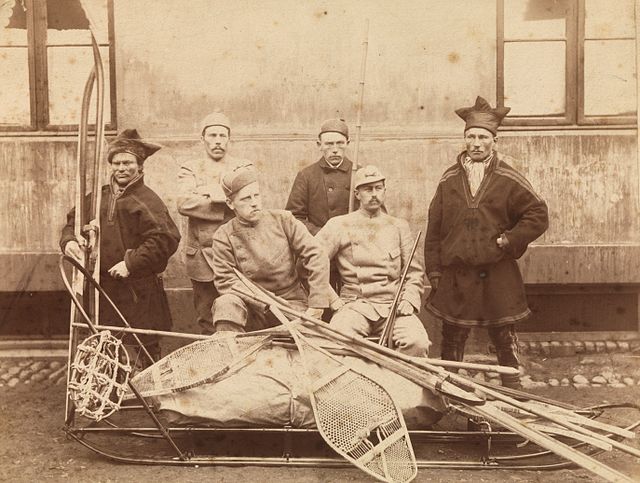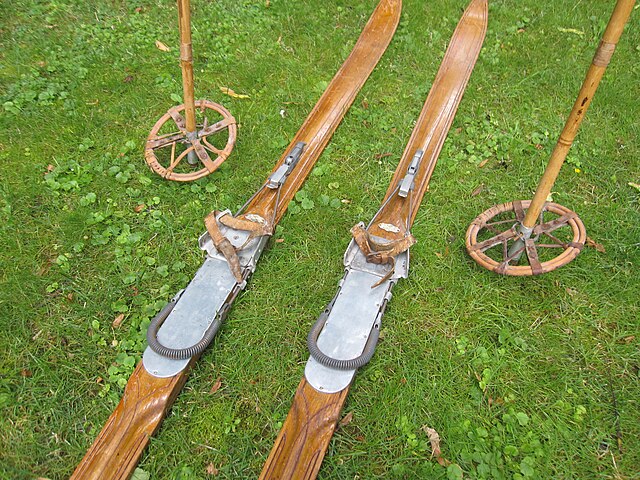Skiing, or traveling over snow on skis, has a history of at least eight millennia. The earliest archaeological examples of skis were found in Karelia and date to 6000 BCE. Although skiing's origins were purely utilitarian, the modern sport evolved from beginnings in Scandinavia, starting in the mid-1800s skiing became a popular recreational activity and sport, becoming practiced in snow-covered regions worldwide, and providing a market for the development of ski resorts and their related communities.
Kalvträskskidan at the ski exhibition in Umeå
Skiers, White Sea rock carvings, before 2000 BCE
British troops with skis in Norway, April 1940
Fridtjof Nansen and his crew pose for the photographer with some of their gear for the 1888 Greenland expedition. From left are: Ravna, Sverdrup, Nansen, Kristiansen, Dietrichson and Balto with Ravna and Balto in Sami clothing.
A ski is a narrow strip of semi-rigid material worn underfoot to glide over snow. Substantially longer than they are wide, and characteristically employed in pairs, skis are attached to ski boots with ski bindings, with either a free, lockable, or partially secured heel. For climbing slopes, ski skins can be attached at the base of the ski.
A shaped alpine ski with relatively little sidecut and classic camber: the tip and tail touch the snow while the midsection is in the air.
Old skis
Asymmetrical skis used by the Danish-Norwegian army in the 18th century, long ski for the right leg, also shown in profile (far left).
Wooden skis with cable (kandahar) bindings and bamboo poles








